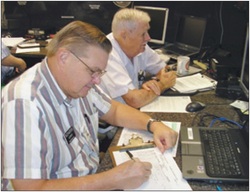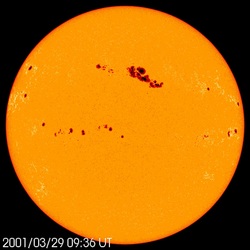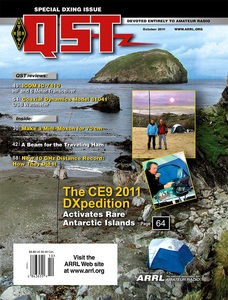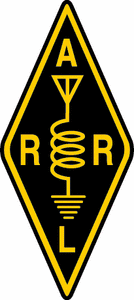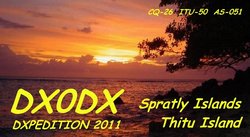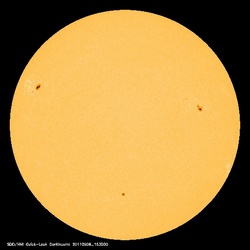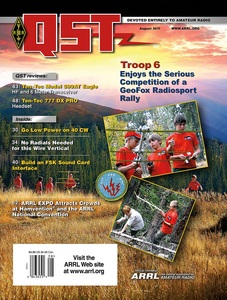 September 8, 2011 John E. Ross, KD8IDJ, Editor
| |||||||||
+ Available on ARRL Audio News. + Public Service: Get SET for the ARRL Simulated Emergency Test
Simulated ARRL's Simulated Emergency Test (SET) is October 1 and 2, 2011. This nationwide exercise is the chance to test your emergency operating skills and the readiness of your communications equipment and accessories in an emergency-like deployment. ARRL Field Organization Leaders at the Section and local levels -- along with many other volunteers who are active in public service and emergency communications -- are developing emergency-like scenarios in consultation with a variety of agencies for whom radio amateurs are known to provide service during emergencies. To find out how you can step up and be a part of the local or Section-level activities, contact your Section Manager. You can find contact information for all 71 ARRL Section Managers on page 16 of any issue of QST. Additional contact information may also be found on the ARRL website. The Amateur Radio Emergency Service® (ARES®), the National Traffic System (NTS), the Radio Amateur Civil Emergency Service (RACES) and members of the ARRL Field Organization will participate and practice emergency operation plans, nets and procedures. Read more here. + Propagation News: Stanford University Researchers Announce Sunspot Breakthrough Imagine forecasting a hurricane in Miami weeks before the storm was even a swirl of clouds off the coast of Africa -- or predicting a tornado in Kansas from the flutter of a butterfly's wing in Texas. These are the kind of forecasts meteorologists can only dream about. Could the dream come true? A new study by Stanford University researchers suggests that such forecasts may one day be possible -- not on Earth, but on the Sun. In the August 19 issue of Science, Stathis Ilonidis, together with co-workers Junwei Zhao and Alexander Kosovichev, announced that they can see some sunspots while they are still submerged, before they are visible to the naked eye. "This could lead to significant advances in space weather forecasting," Ilondis said.
Most Amateur Radio operators are aware of sunspots, those dark blemishes on the surface of the Sun. This is because sunspots influence propagation. They can be a boon to hams interested in HF propagation, as sunspots are the sites of ultraviolet or extreme ultraviolet radiation that creates our ionosphere. But sunspots can also be destructive. They are the source for disturbances, such as flares and the roots of coronal mass ejections (CMEs) that can hinder propagation. When a CME hits the Earth's atmosphere, the low bands will be depressed and signals will be weaker the lower the frequency. The absorption rate will be most severe on 160 meters, less on 80 and somewhat better on 40 meters. The maximum usable frequency (MUF) -- the highest frequency by which a radio wave can propagate between given terminals by ionospheric propagation alone, independent of power -- will be lower and auroral propagation on the VHF bands is quite possible. Read more here. + Check Out the October Issue of QST The October issue of QST is jam-packed with all sorts of things that today's Amateur Radio operator needs. In this issue -- our annual DX issue -- you'll discover both technical and feature articles to get you in the mood for hunting down that rare DX. And just like every issue of QST, you will find something to pique your Amateur Radio interests. A receive antenna can improve the signal-to-noise ratio of those weak, distant stations. Some transceivers don't include the capability to use separate antennas for both receiving and transmitting. In his article "A Receive-Only Antenna Adapter," Gerald Fasse, W8GF, offers a simple schematic for an adapter you can build that will add functionality to your shack. Joe Ostrowski, KI5FJ, shows how you can reduce transmission line loss by matching your antenna at the antenna feed point. In his article "A Remote Impedance Matching Network," he presents a simple to use -- and easy to build -- network that doesn't have to use microprocessors or relays to switch RF components.
In the October 2010 issue of QST, Cezar Trifu, VE3LYC, told his nail-biting account of being stranded on an uninhabited island in the Canadian arctic. Now for October 2011, Trifu describes his memorable DXpedition to the islands of the southern tip of South America in his article "CE9 DXpedition to the Tip of South America." Sean Patrick Doran, W8OKN, now knows that the ARRL's Logbook of The World is the best way to track his progress toward the DXCC and WAS awards. Read about his Eureka! moment in his article "LoTW: Like Taking Your QSLs to the Bank." Have you ever gone to a movie and saw ham radio gear up on the big screen and wondered just how it got there? ARRL News Editor S. Khrystyne Keane, K1SFA, did when she went to see Mr Popper's Penguins over the summer. She tracked down the owner of the ham gear featured in the movie and tells of its journey from shack to screen in "Ham Radio 'Pops' on the Big Screen." Keane also presents all the details from the ARRL Board of Directors 2011 Second Meeting in "ARRL Board of Directors Looks to 2014 -- and Beyond." NCJ Managing Editor Rick Lindquist, WW3DE, takes a look at the ICOM IC-7410 HF and 6 meter transceiver in this month's Product Review. He says that this rig "replaces the IC-746PRO and adds an improved receiver, much faster DSP performance and new features to the mix, but drops 2 meter coverage. Although the new radio does a lot, the 7410 user interface will be familiar to users of current ICOM radios." QST Technical Editor Joel Hallas, W1ZR, checks out the Coaxial Dynamics Model 81041 USB wattmeter: "This is a very nice wattmeter with some extra features that you are likely to appreciate. It does not offer the absolute accuracy of more recent instruments, but will be familiar and handy to many. The provided PC software is useful, but we hope that more will come." Of course, there are the usual columns you know and expect in the October QST: Happenings, Hints & Kinks, The Doctor Is IN, How's DX, Vintage Radio and more. Look for your October issue in your mailbox. QST is the official journal of ARRL, the national association for Amateur Radio. QST is just one of the many benefits of ARRL membership. To join or renew your ARRL membership, please visit the ARRL web page. ARRL In Action: What Have We Been Up to Lately?
This feature is a concise monthly update of some of the things that the ARRL is doing on behalf of its members. This installment -- which covers the month of August -- takes a look at how the ARRL HQ Emergency Response Team helped monitor various nets and provide support to the affected Field Organizations from W1AW, the upcoming Director elections in the Atlantic, Delta and Midwest Divisions, helping to solve interference problems on 60 meters, filing comments with the FCC, reports from the Official Observer Desk and more. Read more here. + Report Calls on NASA to Hire More Astronauts
Even as the space shuttle era has come to a close, a NASA-commissioned report says the space agency needs to hire more astronauts to maintain its presence on the International Space Station and prepare for the next generation of spaceflight. The report warns that "the Astronaut Corps appears to be sized below the minimum required" and that the current corps size "poses a risk to the US investment in human spaceflight capabilities." NASA commissioned the report from the National Research Council, part of the National Academy of Sciences, to examine the agency's astronaut and astronaut training needs in the post-shuttle era. NASA Spokesman Michael Curie said that the report "offers helpful advice about the appropriate size of our astronaut corps as we enter this exciting new era of space exploration and crew transport operations." Beginning in November 1983 with Owen Garriott, W5LFL, on board STS-9, Amateur Radio has been an integral part of NASA missions in space. More than 100 NASA astronauts have received their Amateur Radio license. Read more here. + On the Air: DX0DX Spratly DXpedition "Permanently Cancelled" After numerous setbacks, Chris Dimitrijevic, VK3FY, announced on the DX0DX website that the planned 2012 DX0DX DXpedition to the Spratly Islands has been "permanently cancelled." No explanation was given for the cancellation and Dimitrijevic did not respond to e-mails from the ARRL. Spratly currently sits at #32 on DX Magazine's "Most Wanted" List.
The DX0DX Spratly DXpedition had been postponed at least twice. It was first supposed to happen in January 2011, and then it was delayed until April. According to Dimitrijevic, the postponement to April 2011 was "due to circumstances beyond the control of the DX0DX Team and in the best interests of the Team of Operators." On April 10, 2011, Dimitrijevic sent out a notice that said that 10 of the original 37 operators of the planned 2011 DX0DX DXpedition indicated that they will return in April 2012, but that will not be happening. In April 2012, however, another group is planning a DXpedition to the Spratly Islands. According to the September 4 edition of the Ohio/Penn DX Association's bulletin, members of the Malaysian Amateur Radio Transmitter Society (MARTS) are planning a "2012 Project" to activate Pulau Layang Layang (AS-051) in the Spratlys during the first two weeks of the month. The team leader is C.L. Neoh, 9M2CLN, with support by Tack Kumagai, JE1CKA, and the 9M4SDX Team. The DXpedition coordinator is Tex Izumo, 9M2TO. MARTS is Malaysia's IARU Member-Society. Read more here. Solar Update
Tad "September Sun, you made me see" Cook, K7RA, reports: Solar indicators rose again this week, with the average daily sunspot numbers increasing nearly 21 points to 104.3, while the average daily solar flux was up nearly 12 points to 115.5. The geomagnetic numbers were up as well, with the most active geomagnetic day occurring on September 3. The latest prediction from NOAA/USAF has solar flux at 110, 105 and 100 for September 8-10, 95 on September 11-13, 100 on September 14-15, 103 on September 16-17, and 105 on September 18-22. The planetary A index is predicted at 5 on September 8-9, 18, 15, 10 and 8 on September 10-13, 5 on September 14-17, 7 on September 18-19, and 5 on September 20-23. Geophysical Institute Prague predicts minor storm for September 9-10, active conditions September 11, unsettled September 12, quiet to unsettled September 13 and quiet on September 14-15. Both the NOAA and Prague predictions for September 9-10 are probably based on a recent X2 class solar flare on September 6. Look for more information on the ARRL website on Friday, September 9. For more information concerning radio propagation, visit the ARRL Technical Information Service Propagation page. This week's "Tad Cookism" is brought to you by Human Nature's September Girl. + ARRL Recognizes: Doug Hall, K4DSP, Wins August QST Cover Plaque Award
The winner of the QST Cover Plaque Award for August is Doug Hall, K4DSP, for his article "The FSKit -- A Simple Sound Card Interface for Generating Radioteletype Frequency Shift Keying." Congratulations Doug! The QST Cover Plaque award -- given to the author or authors of the best article in each issue -- is determined by a vote of ARRL members on the QST Cover Plaque Poll Web page. Cast a ballot for your favorite article in the September issue today. This Week on the Radio This week:
Next week:
All dates, unless otherwise stated, are UTC. See the ARRL Contest Branch page, the ARRL Contest Update and the WA7BNM Contest Calendar for more information. Looking for a Special Event station? Be sure to check out the ARRL Special Event Stations Web page. Upcoming ARRL Section, State and Division Conventions and Events
To find a convention or hamfest near you, click here. ARRL -- Your One-Stop Resource for Amateur Radio News and Information Join or Renew Today! ARRL membership includes QST, Amateur Radio's most popular and informative journal, delivered to your mailbox each month. Subscribe to NCJ -- the National Contest Journal. Published bi-monthly, features articles by top contesters, letters, hints, statistics, scores, NA Sprint and QSO Parties. Subscribe to QEX -- A Forum for Communications Experimenters. Published bi-monthly, features technical articles, construction projects, columns and other items of interest to radio amateurs and communications professionals. Free of charge to ARRL members: Subscribe to the ARES E-Letter (monthly public service and emergency communications news), the ARRL Contest Update (bi-weekly contest newsletter), Division and Section news alerts -- and much more! Find us on Facebook. Follow us on Twitter. ARRL offers a wide array of products to enhance your enjoyment of Amateur Radio Donate to the fund of your choice -- support programs not funded by member dues! Click here to advertise in this newsletter. | |||||||||
